How to test your cow for A2/A2. Here is how you can test your own cows and calves to see if they are A2/A2 or not!
This post may contain affiliate links. Read my disclosure policy here.
So, you want to buy a milk cow. Or you already have one. And you want to test her and make sure she’s A2/A2.
How on earth do you go about doing that?
Having a fully A2/A2 herd is very important to me. I don’t handle milk well that isn’t A2, it really starts to mess up my digestion.
So every cow we bring into our herd, or any bull I choose to breed our cows with, absolutely has to be fully A2.
It’s just one of my requirements.
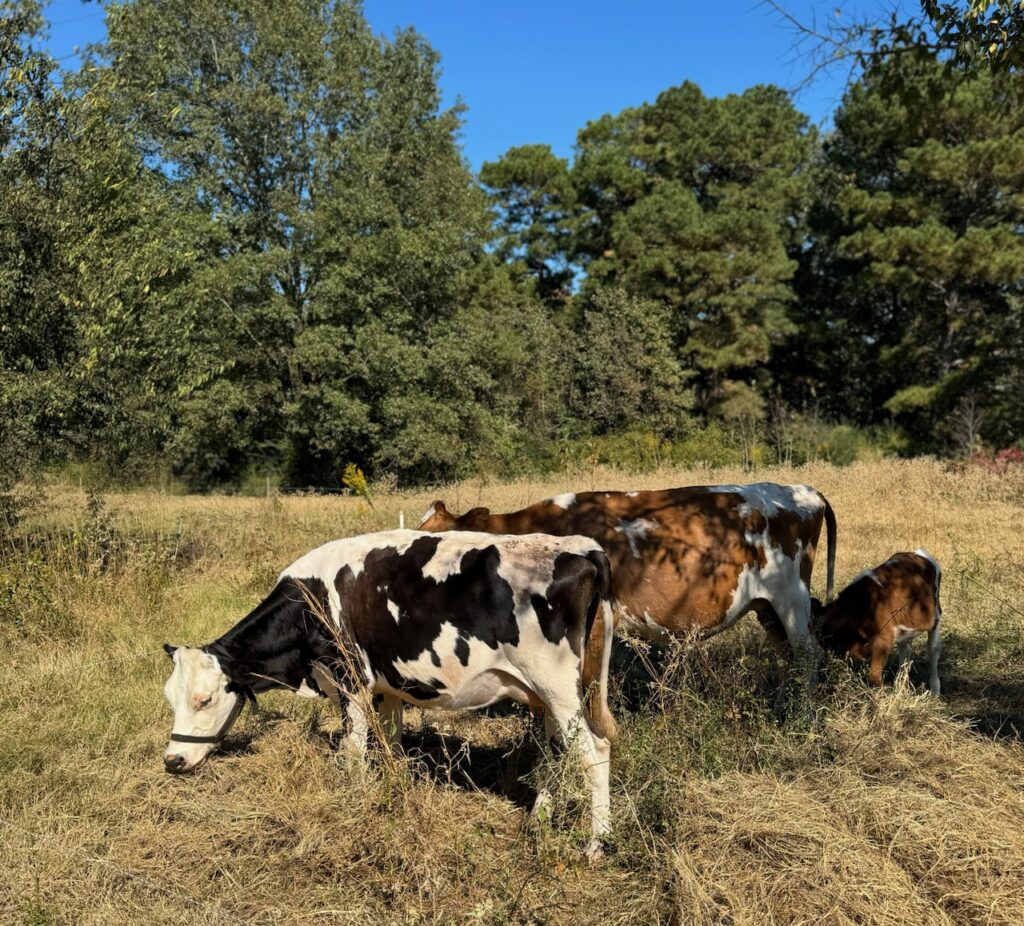
Our cows
We have four cows right now.
Eleanor is the heifer calf we brought with us from Montana to Texas. I tested her when she was a few-week-old calf, after we bought her as a bottle baby from an organic dairy.
Lois was tested by her previous owner before I bought her, and she provided me with the test results.
Luna is A2/A2 by parentage. Because Lois is, and the bull Lois was bred to is A2 also.
Penelope I tested when we bought her because I didn’t really trust that the people we bought her from were truthful about everything with her. So I re-tested her to be sure.
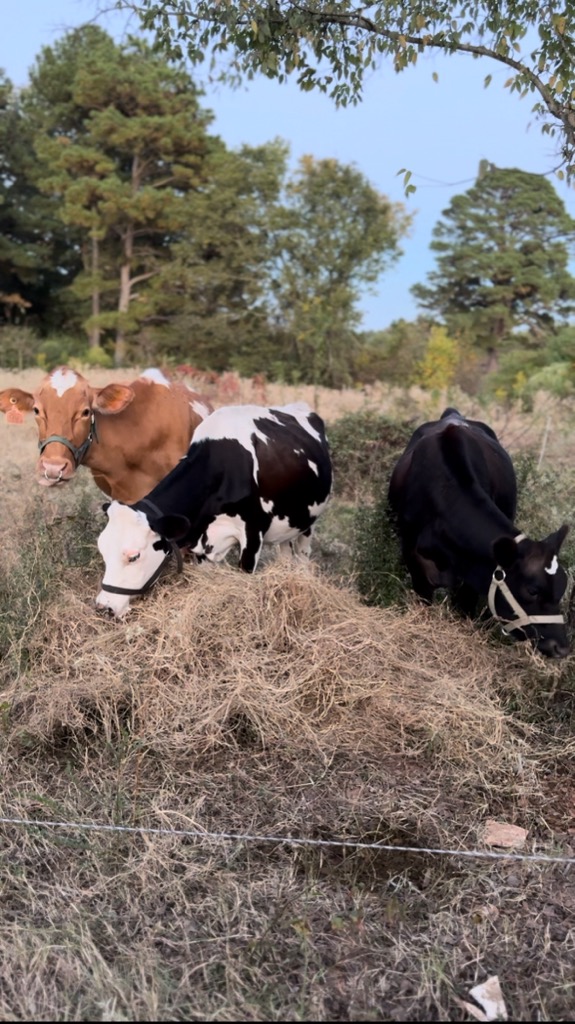
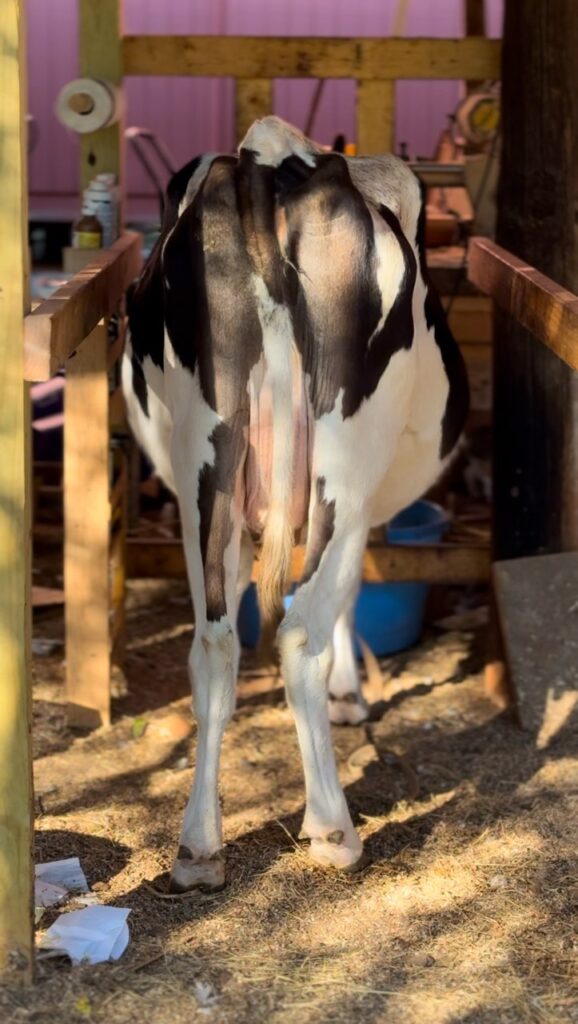
How to test your cow for A2/A2
There are several different ways to go about testing. Some are easier than others, and it depends on the age and stage of the cow for what you can do.
Hair test
When I tested Eleanor I did the tail hair test. Because she was still a calf and I couldn’t use anything like milk to test her.
I used UC Davis lab.
You pull about 20 to 30 hairs being sure that they have the root ball still attached.
You can pull from the switch of the tail or their poll. But I believe that for young calves the switch of the tail is better because the hairs are strong enough to be pulled and not break.
I wrapped a few hairs around my finger at a time and pulled them out quickly, making sure the root ball was still there. The hair roots are necessary for DNA testing.
Keep repeating that until you have about 20 to 30 hairs collected.
I printed off the paper from UC Davis’ website that shows where to tape the hairs down. Being careful not to cover the root follicles with the tape. Like this:
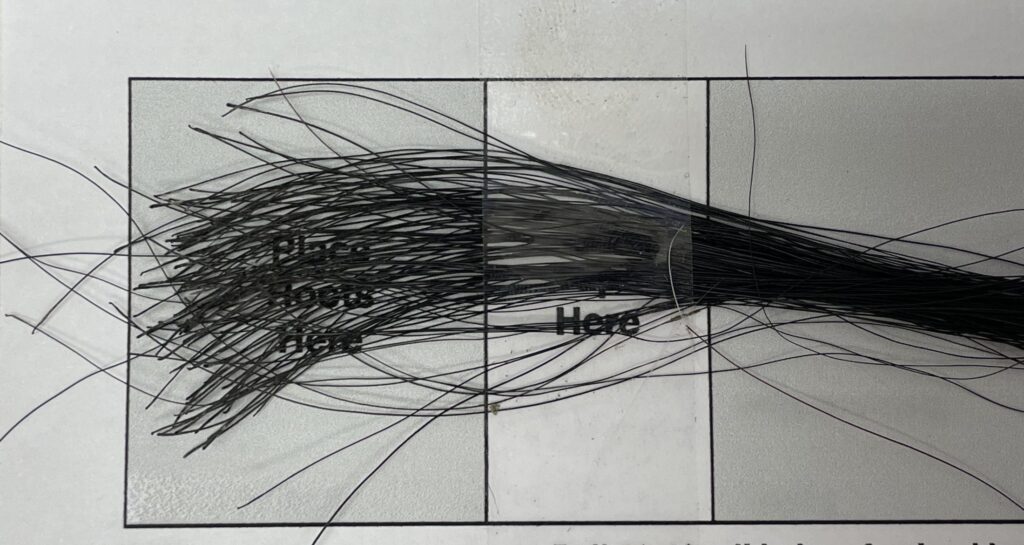
Carefully fold up the paper with the hairs taped to it and place it in a new envelope and seal it up. Write the cow’s name / ID on it.
Then you make sure to fill out any necessary paperwork and mail it into the lab to the address provided on their website.
It seems like it took a couple weeks at least for results to come back. But I was so excited to see that she was A2/A2 and that we could keep her when they finally did come back!
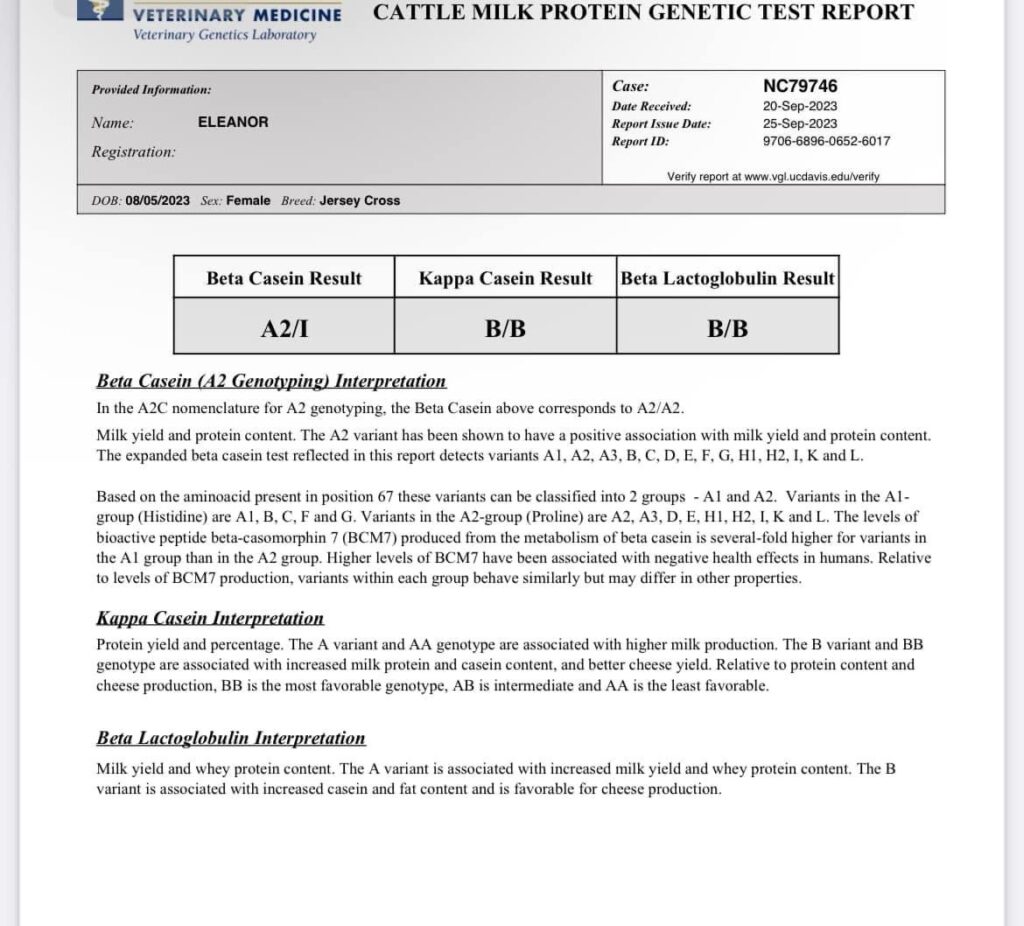
When I first got these results back I was a little confused by what A2/I means. I panicked and thought that meant she was A2/A1! But my friend explained where on the paper you can see that she’s actually A2/A2. Right below results it says: the beta casein above corresponds to A2/A2. So Eleanor is A2/A2.
I also liked that you can test for Kappa Casein and Beta Lactoglobulin which are markers of milk production, cream content and such.
Milk test
The milk test is a bit easier in my opinion. But obviously you can’t do it on a heifer who isn’t in milk. But when we tested Penelope she was already in milk. Plus I was already sending in milk samples to test for mastitis, Johnes and BLV so it was super easy to just add on the A2 testing. I used Central Star Labs for this testing.
I have a bunch of milk sample tubes, with a preservative pellet in the bottom, from Central Star. So I just cleaned and sanitized her teats and milked straight into the tube. Closed up the top, marked the number on the tube, sealed it in a ziplock bag, and shipped it off with all the correct paperwork.
This can take up to 10 days for results to come back from the time they receive the package. Although it’s been much faster for me.
Thankfully Penelope’s results came back A2/A2 also!
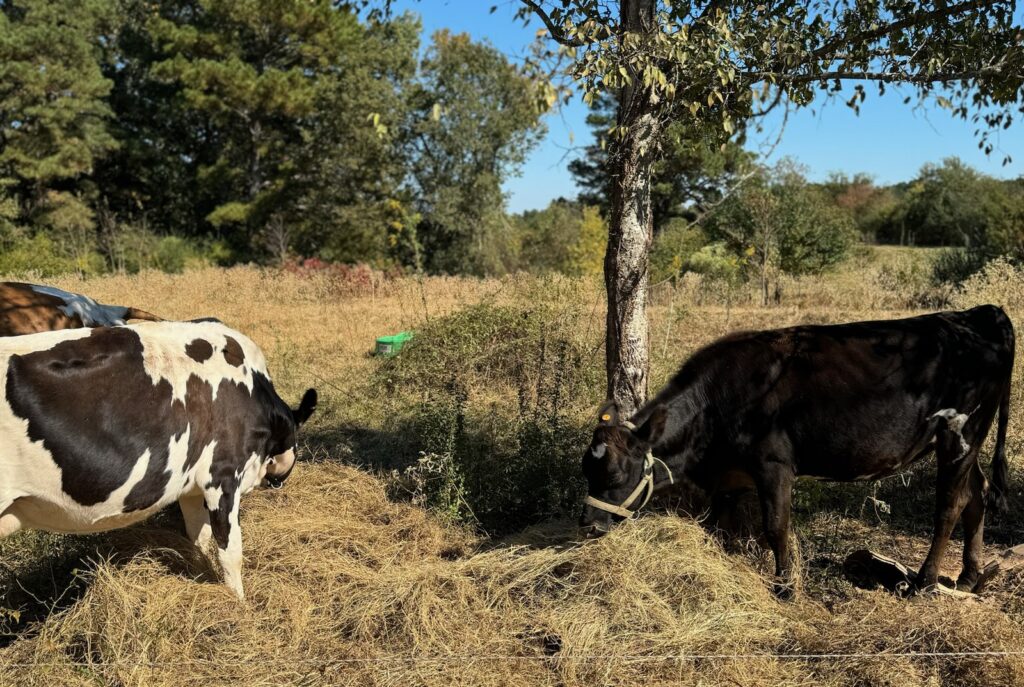
Blood test
On Central Star it looks like you can also send in a blood sample instead of milk to test for A2 status as well. So this is another method you can use for a heifer that isn’t in milk if you don’t want to use the hair sample. I personally find pulling the hairs easier than drawing blood though. But if you wanted to use a blood sample to test for other things, like routine disease testing, then it would make more sense to use blood instead of hair.
I hope that explanation of how to test your cow for A2/A2 status helped y’all out!
And blessings!
Pin it for later!
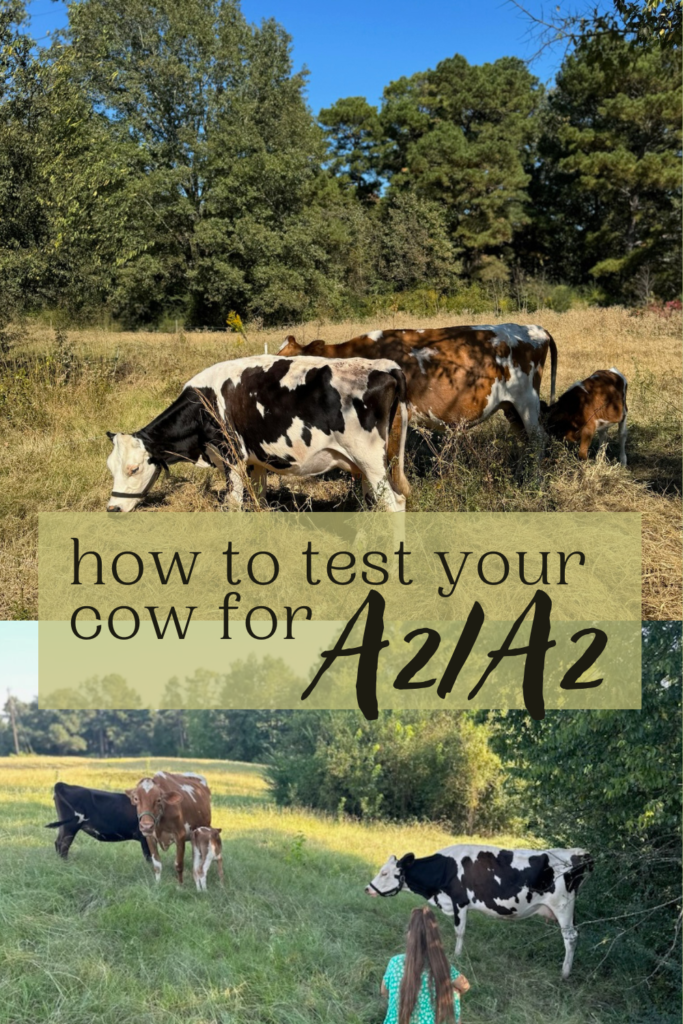

Leave a Reply